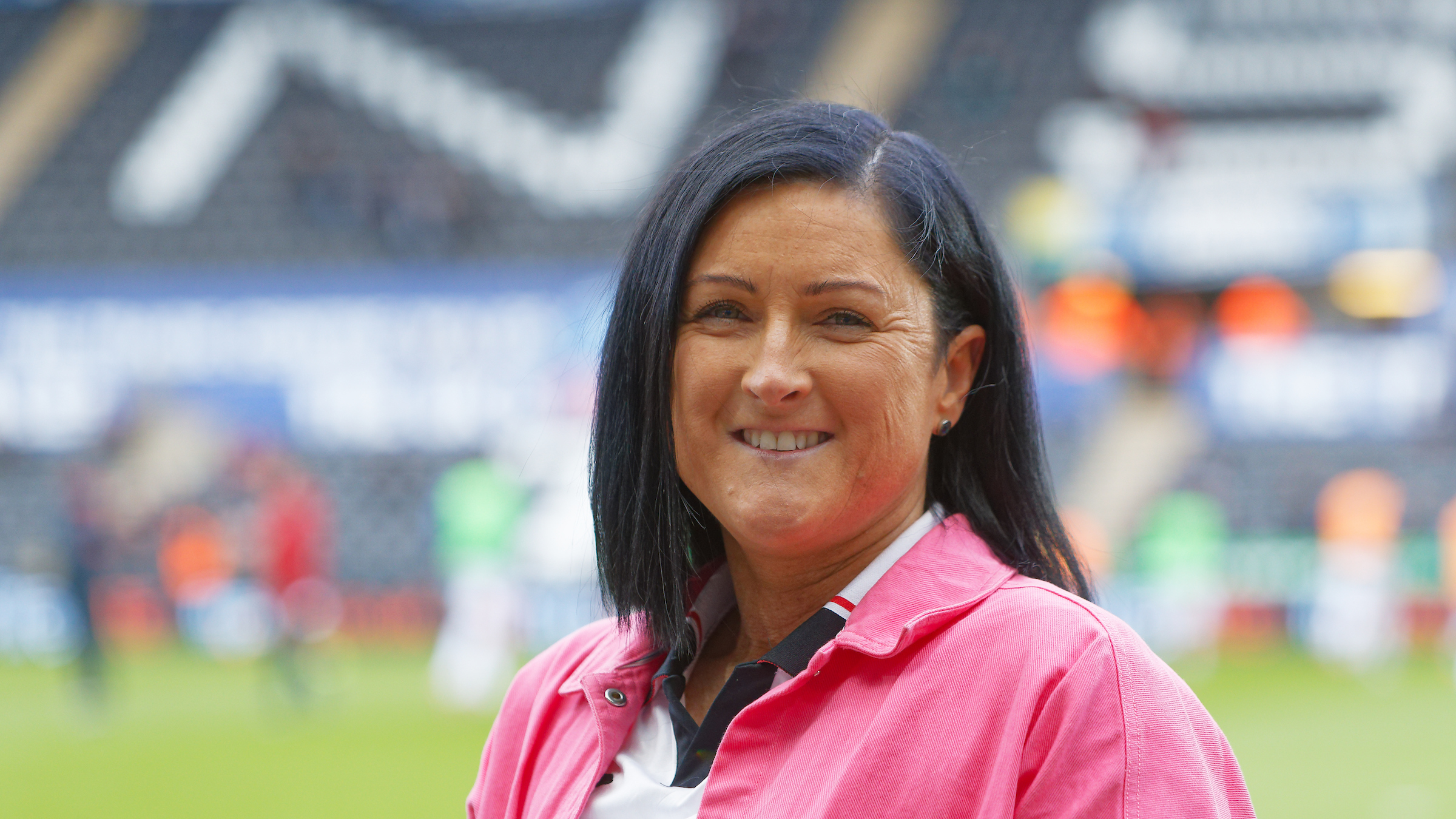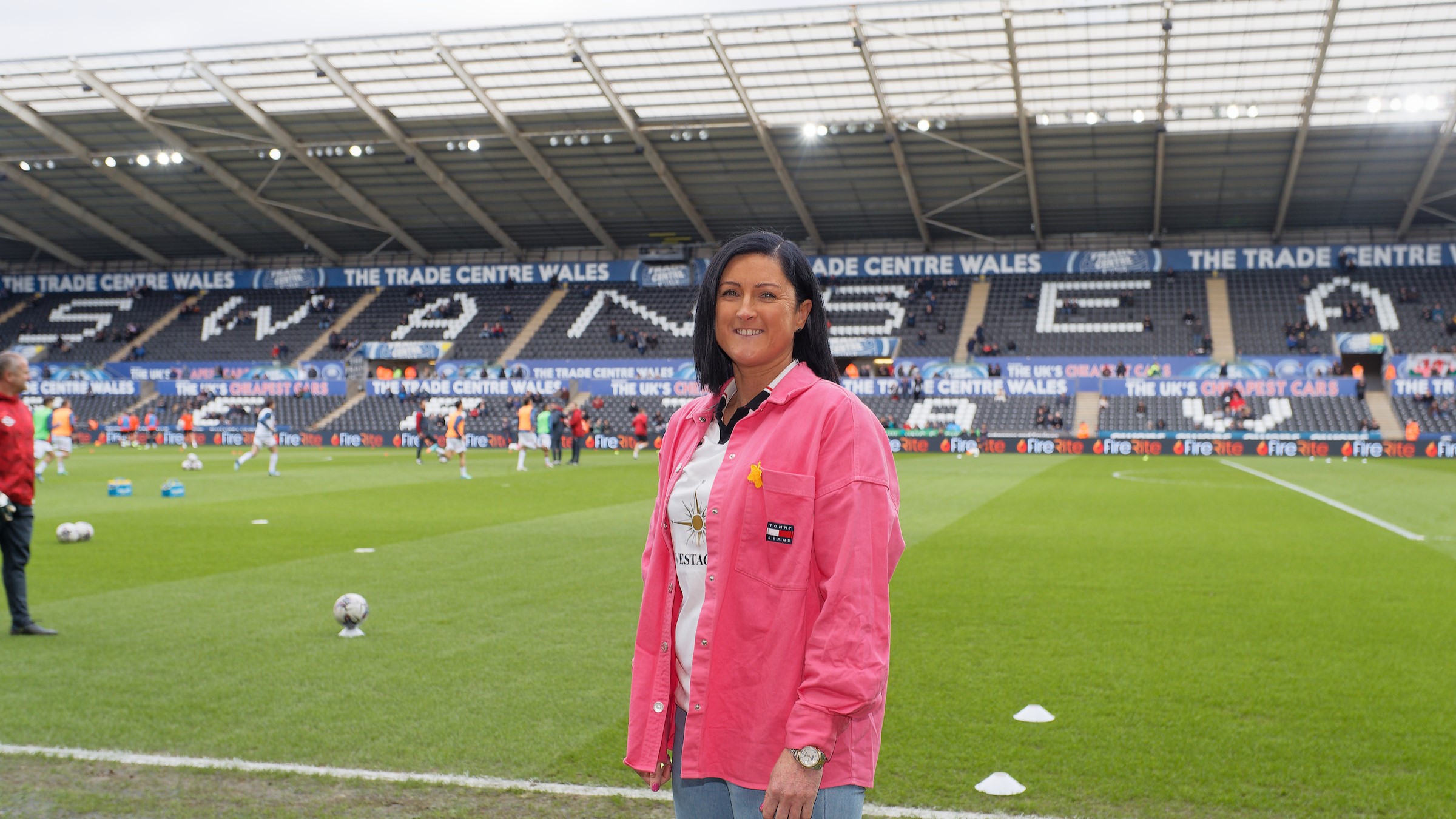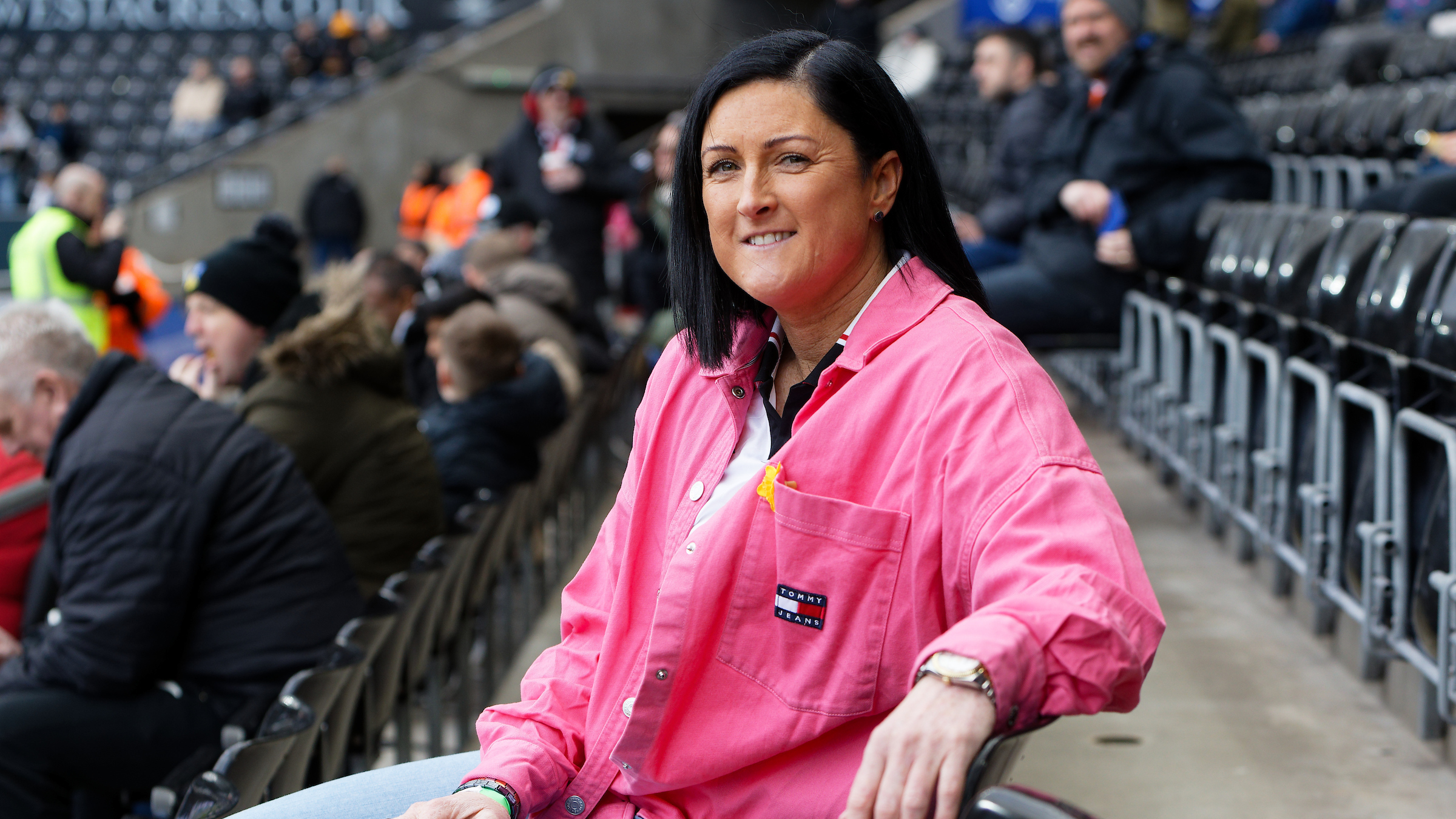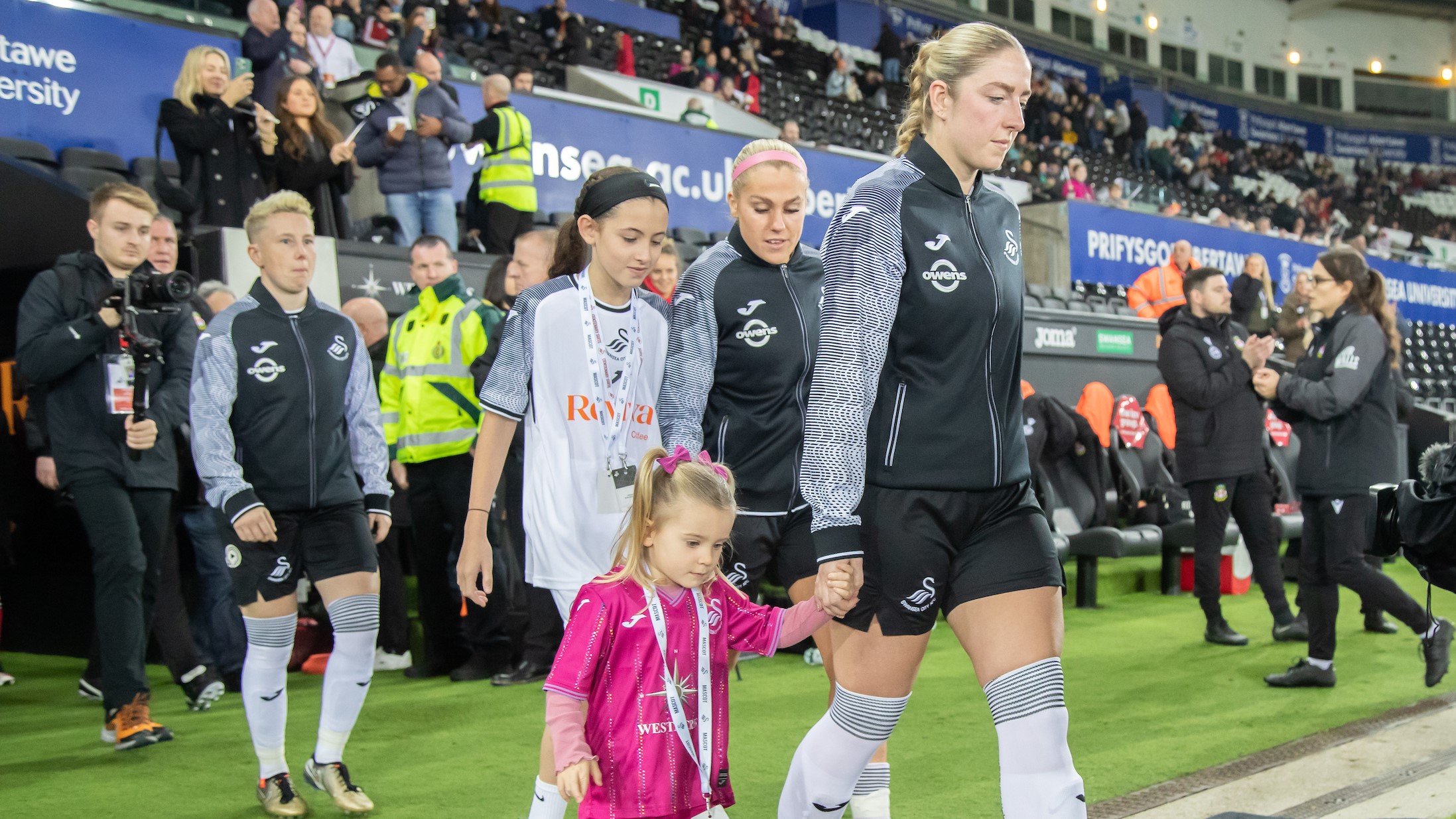International Women's Day | Swansea City Originals | Natalie Ashford

In November 2001, a Swansea City shirt printed with ‘Ashford 5’ was taken to The Vetch Field for the announcement of a new signing.
It was a momentous moment. The media were gathering to cover the news of the 19-year-old Wales youth international joining the Swans from the English top-flight.
If you’re struggling to remember this player, it might help you to know that they played mostly in midfield, captained the Swans for almost a decade and scored the club’s first-ever Champions League goal in 2010.
Still struggling?
The signing in question was Natalie Ashford, and getting the Wales Under-19 international to sign was a coup for a newly-formed Swansea City women’s team who were set to enter the Welsh leagues the following season.

By the end of 2023, that team would be semi-professional and attracting crowds of nearly 4,000 to the Swansea.com Stadium. But, at the turn of the Millenium, Ashford was the star, the original, and the first player to sign for the newly-formed club.
Ashford was a really promising prospect. She’d been scouted from the previous Swansea City Ladies’ team – a now defunct side previously known as BP Llandarcy which existed through much of the 1990s, and competed in the English league system - by Barry Town, who at that time were competing in the FA Women’s Premier League.
But any notion that top-flight football then bore much resemblance to the Women’s Super League supporters watch now could not be further from the reality.
Away trips for that Barry team included journeys to the likes of Doncaster, Leeds, Everton, Tranmere and Sunderland. The logistical, financial and physical demands were considerable.
“They were long journeys,” remembers Ashford.
“We were in the same league as Arsenal, Charlton, Doncaster Belles – those sort of teams. It was the highest league you could play in at the time.
“We’d hire a 52-seat coach for the journey, but we had to pay for it. We were paying subs, and buying our own tracksuits.
“I’d be leaving Swansea at 6am in the morning to go to Barry, and then we’d be travelling from there. You can imagine some of those journeys. It was a long, long way and it was there and back in one day.
“But we were competitive. We came sixth in that league and we were playing against players like (former Wales international and manager) Jayne Ludlow, when she was at Arsenal.
“I actually played with her for a bit at Barry, but then she went to Arsenal.”
Ashford too had been close to joining the north London giants, who regularly topped the league and, even then, had a youth academy which focused on the development of talented players between the ages of 16 and 18.
“They ran a college academy then – but I think I was slightly too old for that,” she recalls.
“Obviously there wasn’t any money – not even in the Arsenal team – so moving away and trying to set up a life there was going to be difficult.”
More significantly, however, Ashford was offered a scholarship at Boston University after catching the eye of coaches in the United States during a three-month coaching placement.
“I went football coaching in America for three months,” she says.
“I was staying with a host family, and the guy ran an Olympic Development Squad, which is a bit like a schoolboys and schoolgirls development centre.
“He’d asked me if I wanted to have a game, and I’d said ‘yeah, I’ll play’. I played and the amount of people there was incredible.
“I was only 18, I was no-one and it was just a local centre of excellence team, but I think I signed more autographs after that game than I ever did after any match in this country.
“I think I scored a goal and had a good game, and this guy said ‘can you play again?’. He actually got scouts from Boston University to the games and I was offered a scholarship.
“I was young, I’d been away from home for three months, and they wanted me to live out there for four years. It’s not like you can jump on the bus and come home.
“I like to go away, but I like to come home, and I was only 18 at the time, so I turned it down.
“That’s probably my biggest regret in life because, out there at that time, it was already professional and that was 28 years ago.”
Ashford returned to Barry Town – who by that time were struggling in the Premier League – and with home comforts clearly important, a phone call from David Griffiths – the then-sport development officer for Swansea – tempted her to return to her hometown.
The now 41-year-old isn’t really able to recall whether she considered the jump to a newly-formed team as a risk, but she remember being sold an impressive and ambitious project with a professional pathway for young female footballers in south Wales.
That pathway needed an end point: a successful senior team to aspire towards. It needed Swansea City Ladies.
Griffiths’ role in Swansea City Ladies is seemingly brief but vital. It begins with an open meeting at George Hall which was designed to gauge the interest of a women’s team in Swansea, and at some point in the story included a radio show which he, Wales goalkeeper Neville Southall, and Ashford presented together.
Ashford admits she barely remembers what was covered in that show, and rather self-effacingly doubts anyone actually listened.
But – with the open meeting well attended and plenty of enthusiasm from the local community – Griffiths enlisted Southall’s help to launch a coaching development pathway which Ashford was also the face of; the radio show came later.

The pathway appealed to Ashford, who after playing for Garden Village as a child found herself without a club when league rules dictated she could no longer play in the boys’ league at the age of 13.
“There was nothing when I finished with the boys, it was just a case of ‘where do I go now?’” she explains.
“There was no team, but there were a few girls without clubs, so my dad started one. Kingsbridge Colts, it was called.
“I can’t remember how many teams were around, but there were obviously a few because we were playing matches.
“At about under-16 level I moved to a team in Gowerton and then, later, I went to BP Llandarcy (Swansea Ladies).”
Ashford is quick to reject the idea that she may have been lost to football without the formation of Kingsbridge Colts – “I live and breathe football, but I am sure I would have found a team somewhere even if it meant travelling” – but acknowledges that too would have required the support from her father.
Barely seven years later, Ashford had been capped at age-grade level by Wales and was the face of women’s football in her hometown.
All of which takes us back to that day in November 2001 with a photoshoot, a printed shirt and the attendant media at The Vetch.
The vision was exciting. It promised a new start for women’s football in the city, representing the first time the women’s team would play under the name of Swansea City and wear the Swans kit with the club crest.
But, for the time being, that was all the support the team would get.
While Ashford was unveiled at The Vetch, she only played their once - a friendly against Liverpool, which was part of a double-header with the men’s team.
“We lost 3-1, which is not bad because they were more established than us in the leagues that were coming along in England,” smiles Ashford.
“That’s the only time we played at the Vetch. I think it was a double-bill with the men’s team but quite a few people stayed to watch.”
Generally, the fledgling team would play at Baglan Moors or Ashley Road and crowds consisted of mainly friends and family.
Ashford laughs when she remembers telling her family and friends to watch Sgorio because a title-decider between the Swans and Caernarfon was being shown.
Yet, when she and her family eagerly settled down in front of the TV, they got to see just five minutes of highlights broadcast on S4C’s flagship football show.
“I was the captain at the time, and I scored so I did the post-match interview on camera,” says Ashford.
“I remember going ‘mum, dad, I’m going to be on now’ and then almost immediately, it was gone.
“It was a game that meant we qualified for the Champions League. A game like that now would definitely get televised and that’s how it should be.
“Young girls are seeing women’s football on the TV now, and I know if I was young now, I’d be saying ‘that’s what I want to do’.”
That was the second consecutive year Swansea qualified for Uefa’s showpiece European club competition, having sealed a place for the first time in 2010.
And Ashford believes that first Champions League qualification and trip to Slovenia proved the catalyst for rapid improvement at the club.
The Swans had won the domestic treble, and there was perhaps a sense that the team had done all it could.
They beat Georgian side FC Baia Zugdidi 2-1, with Ashford and Lindsay Wilson-Morgan finding the net, but games against ZNK Krka (Slovenia) and Hellas Verona (Italy) were a very different prospect. The Swans failed to score in either match conceding four against Krka and seven against Verona.
“Once it became possible to qualify for the Champions League, that gave us something to aim for. Going to the Champions League was a really good experience,” says Ashford.
“Don’t get me wrong, we were the little fish in a big sea. We played two semi-professional teams, and they were miles ahead of us.
“We lost something like 7-0 to the Italian team, but it was way out of our comfort zone and where we’d come from.
“I think things moved rapidly forward after that because it was a level of football we hadn’t experienced yet in Wales.
“We didn’t play at that sort of level, and when we went we realised that there was a big step up.
“Before that we only trained once a week, but we were starting to think ‘maybe we need to train a bit more’.
“It came down to being able to afford a place, because we had to pay to train.
“When we qualified again, it felt like we’d moved on. We had to move on, because we’d seen the competition and we knew we had to improve. We were doing more fitness, training in the car park and training three times a week.
“We even trained on the concourse when it was raining, running and strength and conditioning just to try to catch up, because we knew the standard and we had to find a way to catch up.
“Friday nights, running up and down the concourse – bonkers isn’t it?”
It’s a long way from the current set-up. The semi-professional Swansea City Women squad train twice a week at Landore with gym sessions and personalised fitness programmes.
And for those such as Ashford who were involved at the outset of this football journey, there is a bittersweet feeling about how far the team has come in a little over two decades.
Ashford was at the stadium for the Swans’ record-breaking fixture against Wrexham, which brought in a crowd of 3,859 supporters at the Swansea.com Stadium earlier this season.

She watched from the stands as the current Swans team, with their names and numbers on the backs of their shirts played in the televised league game.
“The current team play games at the stadium now, which is fantastic. Every girls’ team should have that opportunity,” adds Ashford.
“When I think about where it was, and where it is now, it’s fantastic.
“For me, all of this, being part of the first team and helping to create the foundation for this club fills me with pride. If there wasn’t that, there wouldn’t be this.
“But do I wish I was 10 years younger? Yes.
“It’s crossed my mind to contact the club, and see if I’m still at the standard and I often think ‘could I just go back to Swans for one season?’
“I think about that all the time, every day. I’d have loved to have played at the stadium.”